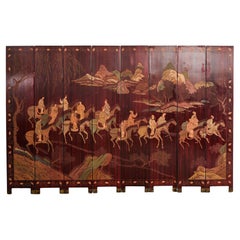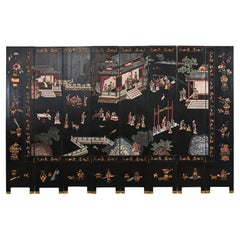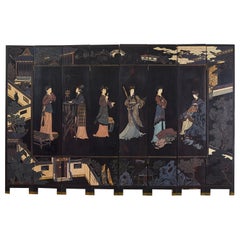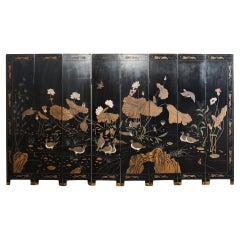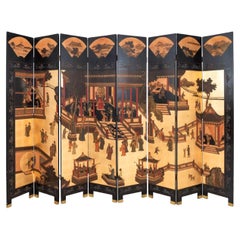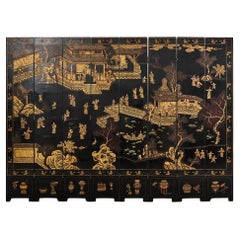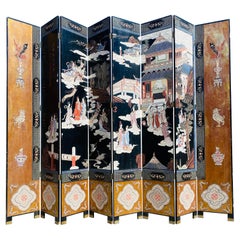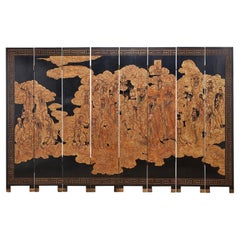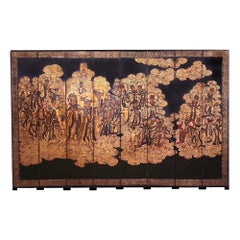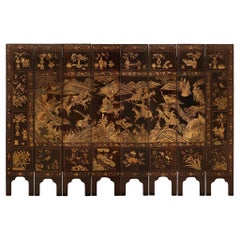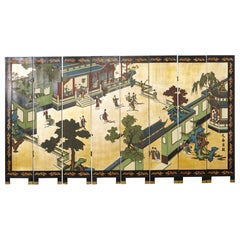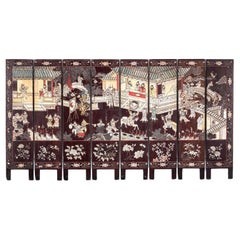Chinese Export Eight Panel Coromandel Screen
20th Century Chinese Chinese Export Paintings and Screens
Brass
20th Century Chinese Chinese Export Paintings and Screens
Brass
20th Century Chinese Chinese Chippendale Paintings and Screens
Brass
20th Century Chinese Chinese Export Paintings and Screens
Brass
20th Century Chinese Chinese Export Paintings and Screens
Brass
Mid-20th Century Chinese Chinese Export Paintings and Screens
Brass
20th Century Chinese Chinese Export Paintings and Screens
Brass
Vintage 1950s Chinese Chinese Export Screens and Room Dividers
Wood
20th Century Chinese Chinese Export Paintings and Screens
Brass, Gold Leaf
Mid-20th Century Chinese Chinese Export Paintings and Screens
Hardwood, Lacquer
20th Century Chinese Chinese Export Paintings and Screens
Brass
Antique 18th Century Chinese Chinese Export Paintings and Screens
Wood
Recent Sales
20th Century Chinese Chinese Export Paintings and Screens
Brass
Antique 19th Century Chinese Chinese Export Paintings and Screens
Wood
20th Century Chinese Export Paintings and Screens
Wood, Giltwood
20th Century Chinese Chinese Export Paintings and Screens
Brass
Antique 1880s Chinese Chinese Export Screens and Room Dividers
Lacquer
Mid-20th Century Chinese Chinoiserie Screens and Room Dividers
Metal, Gold Leaf
Mid-20th Century Chinese Export Bookcases
Wood, Lacquer
20th Century Chinese Chinese Export Paintings and Screens
Brass
20th Century Chinese Chinese Export Paintings and Screens
Brass
20th Century Chinese Chinese Export Paintings and Screens
Brass
20th Century Chinese Chinese Export Paintings and Screens
Brass
20th Century Chinese Chinese Export Paintings and Screens
Brass
20th Century Chinese Chinese Export Paintings and Screens
Brass
20th Century Chinese Chinese Export Paintings and Screens
Brass
20th Century Chinese Chinese Export Paintings and Screens
Brass
20th Century Chinese Chinese Export Paintings and Screens
Brass
20th Century Chinese Chinese Export Paintings and Screens
Brass
20th Century Chinese Chinese Export Paintings and Screens
Brass
20th Century Chinese Chinese Export Paintings and Screens
20th Century Chinese Chinese Export Paintings and Screens
Brass
20th Century Chinese Chinese Export Paintings and Screens
Brass, Gold Leaf
20th Century Chinese Chinese Export Paintings and Screens
Brass
Mid-20th Century Chinese Chinese Export Screens and Room Dividers
Brass
20th Century Chinese Chinese Export Screens and Room Dividers
Wood
Vintage 1930s Asian Chinese Export Screens and Room Dividers
Gold Leaf
Mid-20th Century Chinese Chinese Export Paintings and Screens
Metal
People Also Browsed
Vintage 1950s Italian Mid-Century Modern Table Lamps
Metal, Brass
20th Century Japanese Showa Paintings and Screens
Brass
2010s South African Minimalist Pedestals
Burl, Poplar, Wood
21st Century and Contemporary Swedish Scandinavian Modern Wall Lights an...
Metal
21st Century and Contemporary French Modern Chairs
Steel
Antique 19th Century Japanese Meiji Paintings and Screens
Gold Leaf
Vintage 1930s Japanese Arms, Armor and Weapons
Fabric, Glass
Mid-20th Century Chinese Screens and Room Dividers
Wood
20th Century Chinese Chinese Export Paintings and Screens
Soapstone, Brass
20th Century Chinese Chinese Export Paintings and Screens
Soapstone, Brass
20th Century Chinoiserie Screens and Room Dividers
Brass
20th Century Chinese Chinese Export Paintings and Screens
Soapstone, Brass
20th Century Chinese Chinese Export Paintings and Screens
Brass, Gold Leaf
Antique 19th Century Japanese Meiji Paintings and Screens
Brass, Gold Leaf
Antique 19th Century English Chinoiserie Vanities
Brass
20th Century Chinese Paintings and Screens
Wood
Chinese Export Eight Panel Coromandel Screen For Sale on 1stDibs
How Much is a Chinese Export Eight Panel Coromandel Screen?
A Close Look at Chinese-export Furniture
Expanded trade between Europe and East Asia, starting in the 16th century, led to a booming market for exported goods, particularly furniture. This was bolstered by the establishment of the Dutch and English East India Companies at the beginning of the 17th century. From folding screens and chairs to lacquer tables and silver, Chinese Export furniture was in demand and regularly copied and imitated, leading to styles like chinoiserie and Chinese Chippendale.
The expansion of exporting that had strengthened the arts during the Ming dynasty continued into the Qing dynasty era — Chinese designers made many furniture pieces specifically for export, resulting in distinctive designs that mixed traditional techniques with forms appealing to foreign buyers. For instance, cabinetmakers in Canton (modern-day Guangzhou) were prolific in crafting hardwood furniture for export in European styles that involved the expert joinery techniques of Chinese furniture. Designs for Chinese Export porcelain, cabinets, decorative objects and other furniture were often more ornately adorned than they would be for a local audience, such as with mother-of-pearl overlays or surfaces featuring lavish pictorial scenes or gold on black motifs. Some were even commissioned by wealthy European families to be adorned with their coat of arms.
Because lacquer furniture was especially prized, and the resin used to create it was difficult to import as it would harden during the long voyage, artisans in China and Japan exported numerous lacquer pieces. Long before lacquer made its way to Japan, the Chinese treated the material differently. They used it to create smooth, glossy surfaces, but also for carving, an art that began in the 12th century and is exclusively Chinese. These pieces are called cinnabar lacquer after the powdered mercury sulfide (cinnabar) employed to produce their characteristic red hue. A popular form for export was a compact cabinet with drawers, usually displayed on a small table. Undecorated furniture built in Europe was also shipped to China to be lacquered. The international exchange of design would influence furniture into the 19th century and later, informing styles such as Art Deco and Art Nouveau.
Find a collection of antique Chinese Export tables, beds, cupboards, table lamps and more furniture on 1stDibs.
Finding the Right Paintings-screens for You
Traditional Asian paintings were often created on scrolls and folding screens. Artisans made screens that could be folded up or spread out by connecting several panels using hinges. Today, antique Asian folding screens and paintings are sophisticated decorative accents that can serve as makeshift partitions to ensure privacy.
The original folding screens were created by Chinese artists. The earliest record of screens comes from the 2nd century B.C., and surviving examples date back to the Ming dynasty. Chinese painting utilizes many of the same tools as calligraphy — these screens were crafted from wood with painted panels featuring striking art or calligraphy that told cultural stories or represented nature and life in the area.
The practice was introduced to Japan, where paintings for screens were made on paper and silk, in the 8th century. These paintings frequently feature subjects such as landscapes, animals, flowers and Buddhist religious themes. Along with screens for tea ceremonies and dance backgrounds, there were screens for use in Shinto and Buddhist temples.
In the 17th century, screens began to be imported to Europe where their popularity grew. Coco Chanel famously collected Coromandel folding screens.
Traditional Asian paintings can make a tasteful addition to any wall, and screens can be used as decoration or, in the case of larger iterations, as an aesthetic way to divide a large room. Browse the selection of antique Asian paintings and screens from a variety of styles and eras on 1stDibs.
